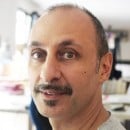To successfully deal with the crisis caused by this pandemic, what lessons can we learn from the past? And what do we have to do to try and avoid a repetition of similar experiences in the future?
The science philosopher and evolutionist Telmo Pievani put these questions to Jared Diamond, anthropologist, author of many essays (the most recent being “Upheaval”) and winner of the Pulitzer prize, who uses a multi-disciplinary approach to investigation, in which anthropology, linguistics, genetics, geography and history converge.
Below is a summary of the most significant parts of their conversation.
Starting with the following statement by Pievani: as it is very well-known, at least 20% of our DNA comes from viruses, and so there is a long history of the connection between humans and infections. So why are we unable to learn from the past? And what is different with respect to this epidemic outbreak today?
Diamond’s response, true to form, is clear and somewhat unconventional:
There is nothing different about this virus. This virus is transmissible from person to person, but so is flu, so is smallpox, so is the measles. However, there are two things that are different. One is that the world’s population is bigger than it ever has been: there are more people on planet earth to infect and to kill than ever before. At the end of World War I, there was the famous influenza epidemic, but the population of the world then was less than two billion. The other thing that is different about this virus is the circumstances: now there are jet airplanes – that didn’t exist in the past – which spread the virus more quickly around the world.
Furthermore, Diamond points out other substantial differences between the epidemiological circumstances of the past, when indigenous populations were also wiped out by viruses brought by invaders coming from other continents:
No humans have any immunity to this virus. It is unlike the situation when the Europeans came to the New World beginning with Christopher Colombus in 1492: the Europeans brought diseases, like smallpox and measles, to which Europeans had acquired immunity and some genetic immunity, but native Americans had no immunity at all and so there was selective die-off resulting from these diseases. Back then and in subsequent times, in other parts of the world, there were epidemics in which natives died massively. That is not the case today at all. This virus kills people that are weak, regardless of whether they are native American or whether they are American citizens of European descent, not for any reasons connected to genetics or immunity.
In a recent article, Diamond wrote about another crucial issue, that the best thing we can do right now, during this pandemic, is to think about how to avoid the next one. But if things remain as they are, what action do we have to take?
The current pandemic, SARS; MERS, AIDS, Ebola… all of these new emerging diseases of humans came to us from animals’ diseases. They were transmitted to us by contact between humans and wild animals. If the contact is by small numbers of people, the risk is not high. When it gets dangerous is when lots of people get exposed to wild animals, like in the open-air markets in Asia. …Therefore, to stop the virus, the first thing we have to do is close down the wild animal markets. The other way that viruses spread is the trade of traditional medicines, which uses substances taken directly from the organs of wild animals. To protect ourselves we also have to close-off this trade.
However, together with these specific measures, Diamond also believes that we need to have a different mental approach, by following the example of the Boy Scouts and their famous motto “Be prepared”:
The world was not prepared for the virus, but we should have been prepared. We already knew about SARS, Ebola, Marberg, MERS, and we knew about mad cow disease and AIDS, but we had not prepared ourselves by stockpiling face masks. We ought to prepare plans, and stockpile face masks, grain, fuel, chemicals and industrial parts.
Finally, Diamond makes a parallel between the pandemic and another serious world problem – the environmental crisis – and expresses his hope for the future:
The most important thing to learn is that this is a global issue that can be solved only by cooperation among the world’s people and with solutions on a global scale. The environmental crisis is another huge problem, but people don’t take it seriously. Why? Because climate change kills you slowly and in ways not apparent, whereas the virus kills you quickly and visibly. Having conquered this virus, I hope that we will then go on to conquer huge problems, like climate change and inequality.

